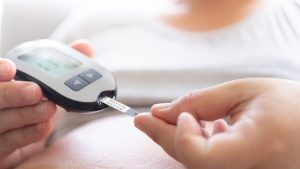From The Web / Cervical cancer self-tests helping to break down barriers and increase screening rates

The test takes about two minutes, which I spend lying on my back with my legs prised open.
The doctor gently inserts a speculum — to hold the walls of my vagina apart — before sliding in what looks like a thin, double-headed toothbrush to take a scraping of cells from my cervix.
It’s not the most pleasant experience, but I feel lucky: I’m in and out of my GP within 15 minutes, and the test itself is no big deal.
For many women, this is not the case.
Cervical cancer screening can be a considerable challenge for women who feel embarrassed, fearful or anxious about the procedure.
Their reservations are “culturally driven”, according to cervical cancer expert Marion Saville, “but it’s not one culture”.
“For women who are traumatised in any way — whether they’re economically deprived, they’ve had difficult family circumstances, or for some women there are religious reasons — it’s just too much vulnerability to lie on your back and get the speculum put in,” she said.
In Australia, 80 per cent of cervical cancers are found in women who are overdue for screening or have never been screened.
“We know there’s an equity issue in our cervical screening program,” said Dr Saville, executive director of the VCS Foundation, a cervical screening not-for-profit.
“Women from lower socio-economic settings, Aboriginal and Torres Strait Islander women, and women from culturally and linguistically diverse backgrounds do not screen as often … and are more likely to get cancer.”
In a bid to overcome these barriers, a self-testing process was introduced to Australia’s National Cervical Screening Program in 2017.
It means women aged 30 and above who are two or more years overdue for screening and who decline a test with their GP are now able to take a vaginal swab themselves (while at a medical clinic), which is then sent for testing.
An Australian trial found that under-screened women are more likely to take part in cervical cancer screening if they are offered self-collection, rather than a reminder letter to have a practitioner-collected test.
In 2018, more than 1,400 Australian women took advantage of the self-collection pathway.
The women most likely to benefit include those from culturally and linguistically diverse backgrounds, women who have experienced sexual assault, women with disabilities and women living in remote areas.
The introduction of the self-collection process was part of broader changes to Australia’s national screening program in 2017, when the type of test done on women’s cervical cells — whether collected by a GP or by women themselves — was updated.
Source: ABC Health and Wellbeing

